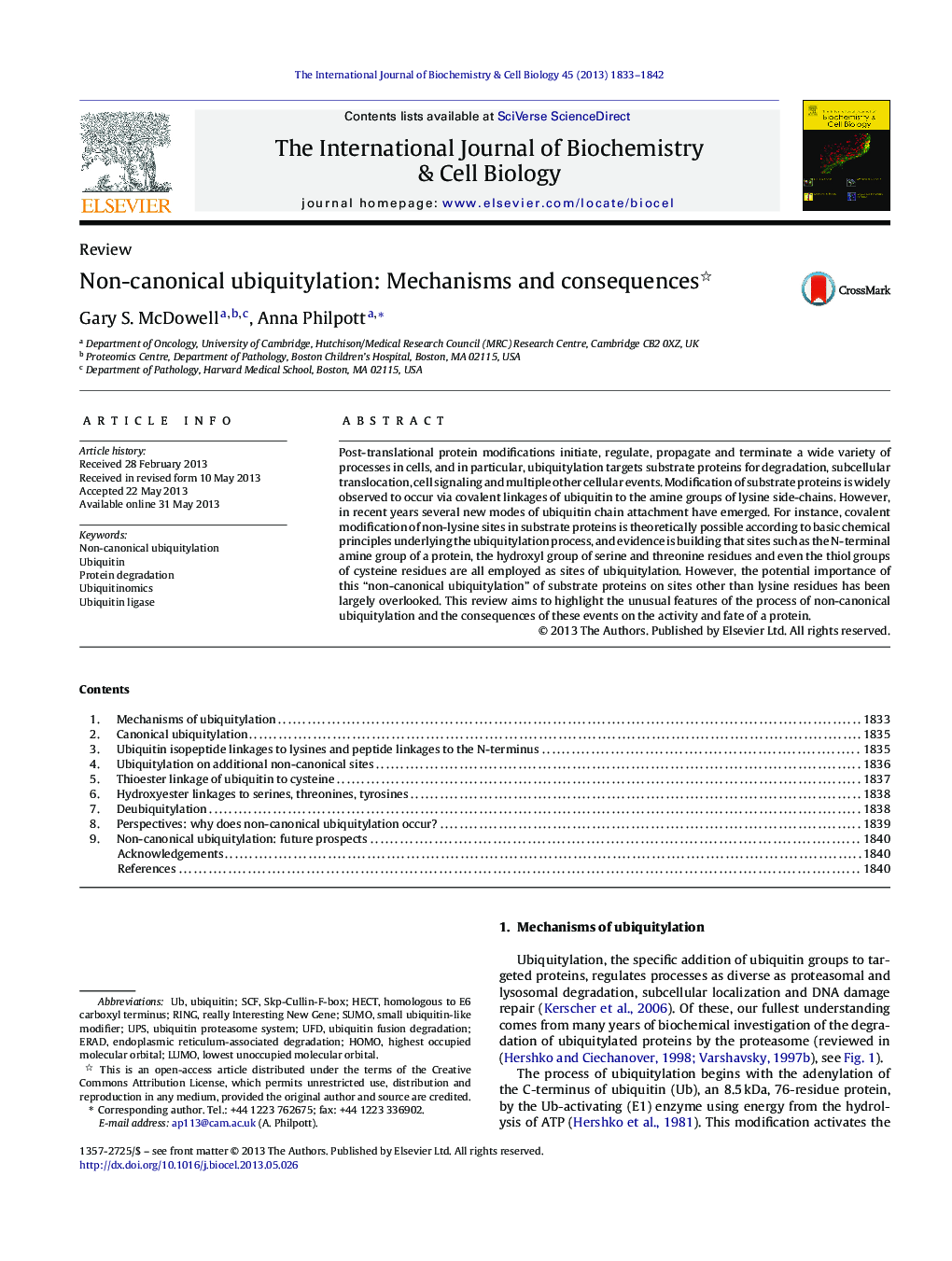| کد مقاله | کد نشریه | سال انتشار | مقاله انگلیسی | نسخه تمام متن |
|---|---|---|---|---|
| 8323992 | 1539903 | 2013 | 10 صفحه PDF | دانلود رایگان |
عنوان انگلیسی مقاله ISI
Non-canonical ubiquitylation: Mechanisms and consequences
ترجمه فارسی عنوان
غیرقابل پذیرش غیر کانونی: مکانیسم و عواقب آن
دانلود مقاله + سفارش ترجمه
دانلود مقاله ISI انگلیسی
رایگان برای ایرانیان
کلمات کلیدی
SUMOERADSCFHECTUFDubiquitin ligase - ubiquitin لیگازHomo - انسان، هوموhighest occupied molecular orbital - بالاترین مدول مولکولی اشغال شدهProtein degradation - تخریب پروتئینendoplasmic reticulum-associated degradation - تداخل وابسته به شبکیه آندوپلاسمیRing - حلقهUbiquitin proteasome system - سیستم پروتئازوم UbiquitinLUMO - لوموreally interesting new gene - ژن جدید واقعا جالبLowest Unoccupied Molecular Orbital - کمترین مدار بی نظیر مولکولیsmall ubiquitin-like modifier - کوچک مانند ubiquitin مانند اصلاح کنندهUPS - یو پی اسUbiquitin - یوبیکویتین
موضوعات مرتبط
علوم زیستی و بیوفناوری
بیوشیمی، ژنتیک و زیست شناسی مولکولی
زیست شیمی
چکیده انگلیسی
Post-translational protein modifications initiate, regulate, propagate and terminate a wide variety of processes in cells, and in particular, ubiquitylation targets substrate proteins for degradation, subcellular translocation, cell signaling and multiple other cellular events. Modification of substrate proteins is widely observed to occur via covalent linkages of ubiquitin to the amine groups of lysine side-chains. However, in recent years several new modes of ubiquitin chain attachment have emerged. For instance, covalent modification of non-lysine sites in substrate proteins is theoretically possible according to basic chemical principles underlying the ubiquitylation process, and evidence is building that sites such as the N-terminal amine group of a protein, the hydroxyl group of serine and threonine residues and even the thiol groups of cysteine residues are all employed as sites of ubiquitylation. However, the potential importance of this “non-canonical ubiquitylation” of substrate proteins on sites other than lysine residues has been largely overlooked. This review aims to highlight the unusual features of the process of non-canonical ubiquitylation and the consequences of these events on the activity and fate of a protein.
ناشر
Database: Elsevier - ScienceDirect (ساینس دایرکت)
Journal: The International Journal of Biochemistry & Cell Biology - Volume 45, Issue 8, August 2013, Pages 1833-1842
Journal: The International Journal of Biochemistry & Cell Biology - Volume 45, Issue 8, August 2013, Pages 1833-1842
نویسندگان
Gary S. McDowell, Anna Philpott,
